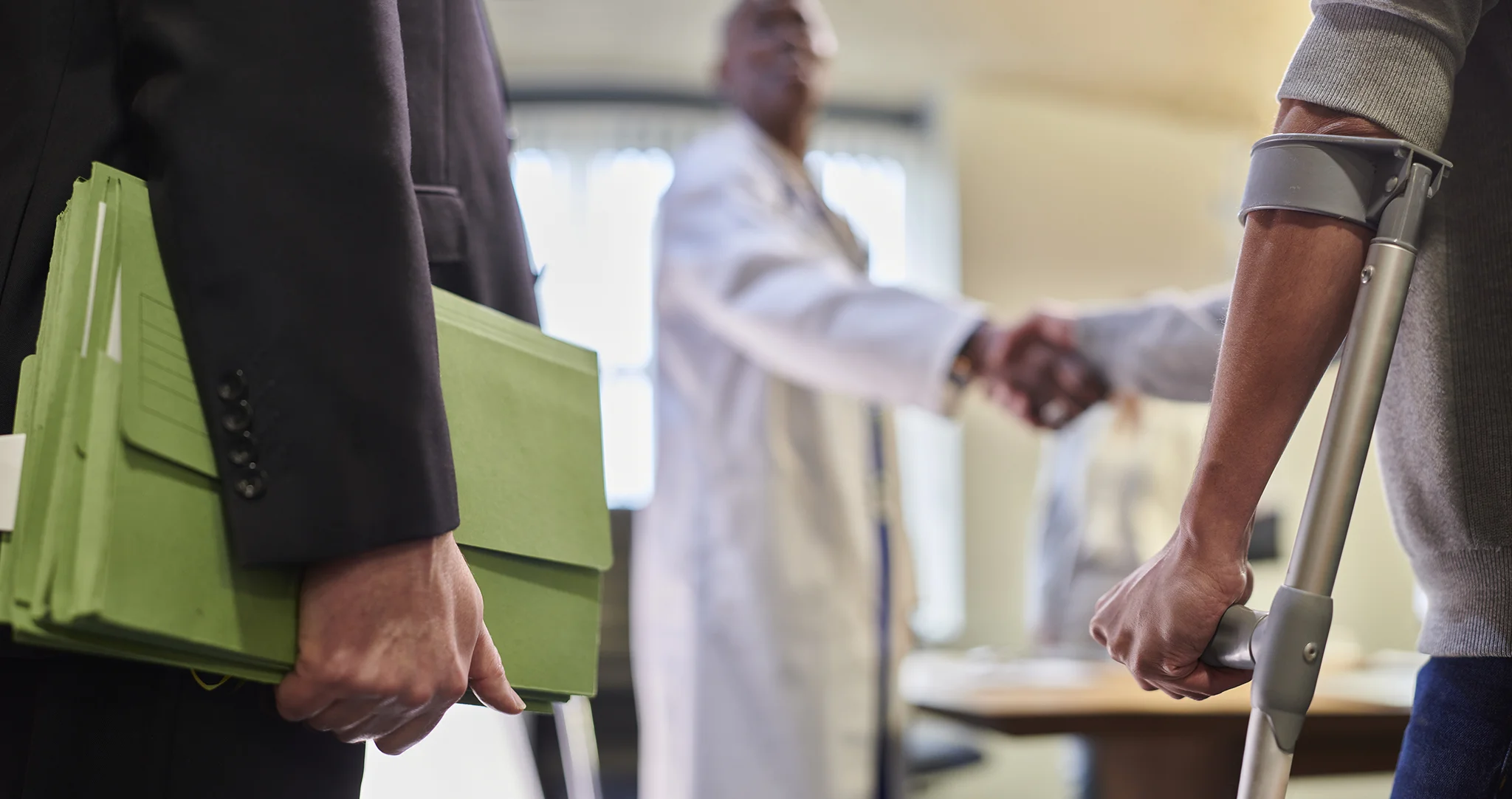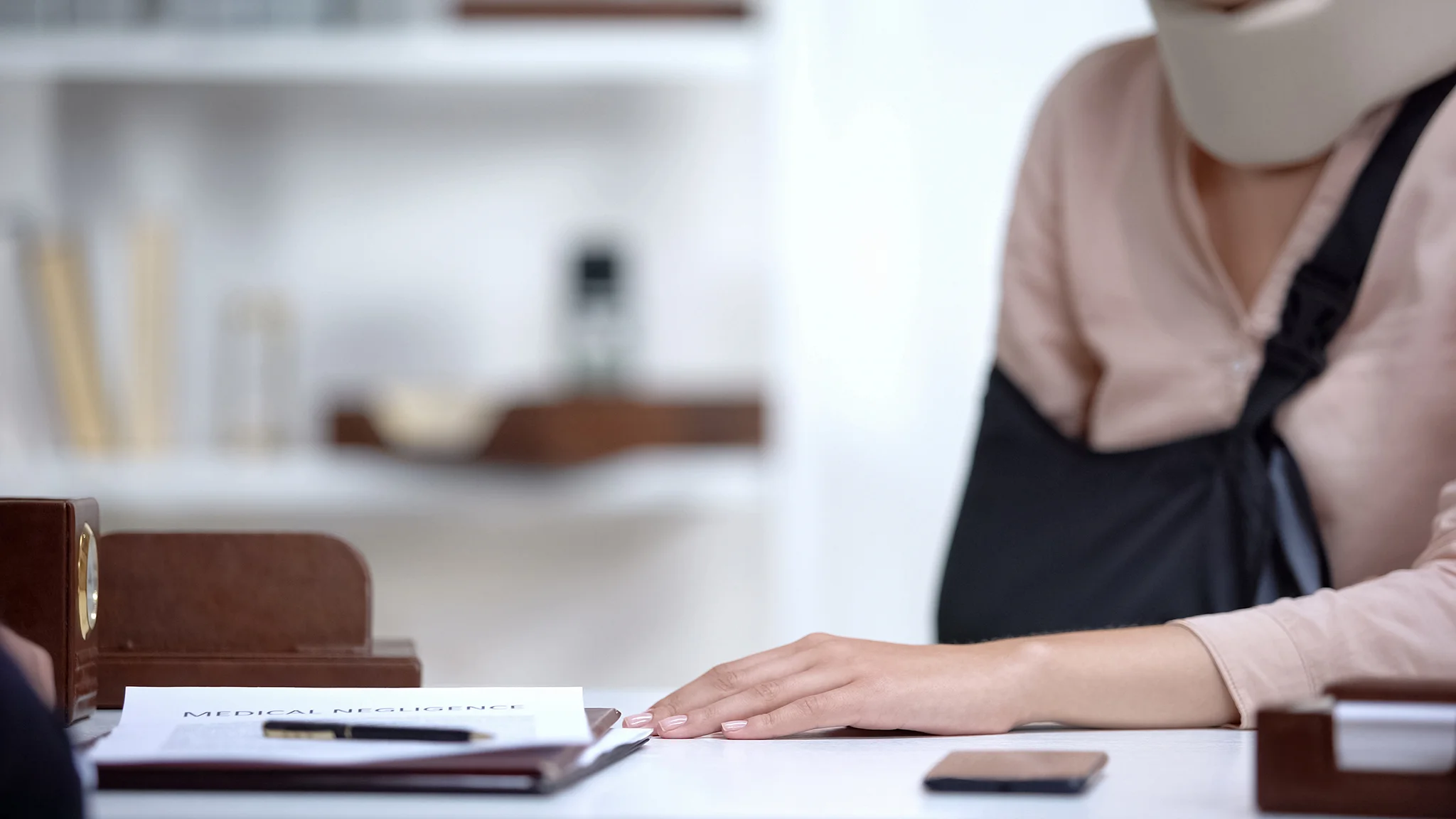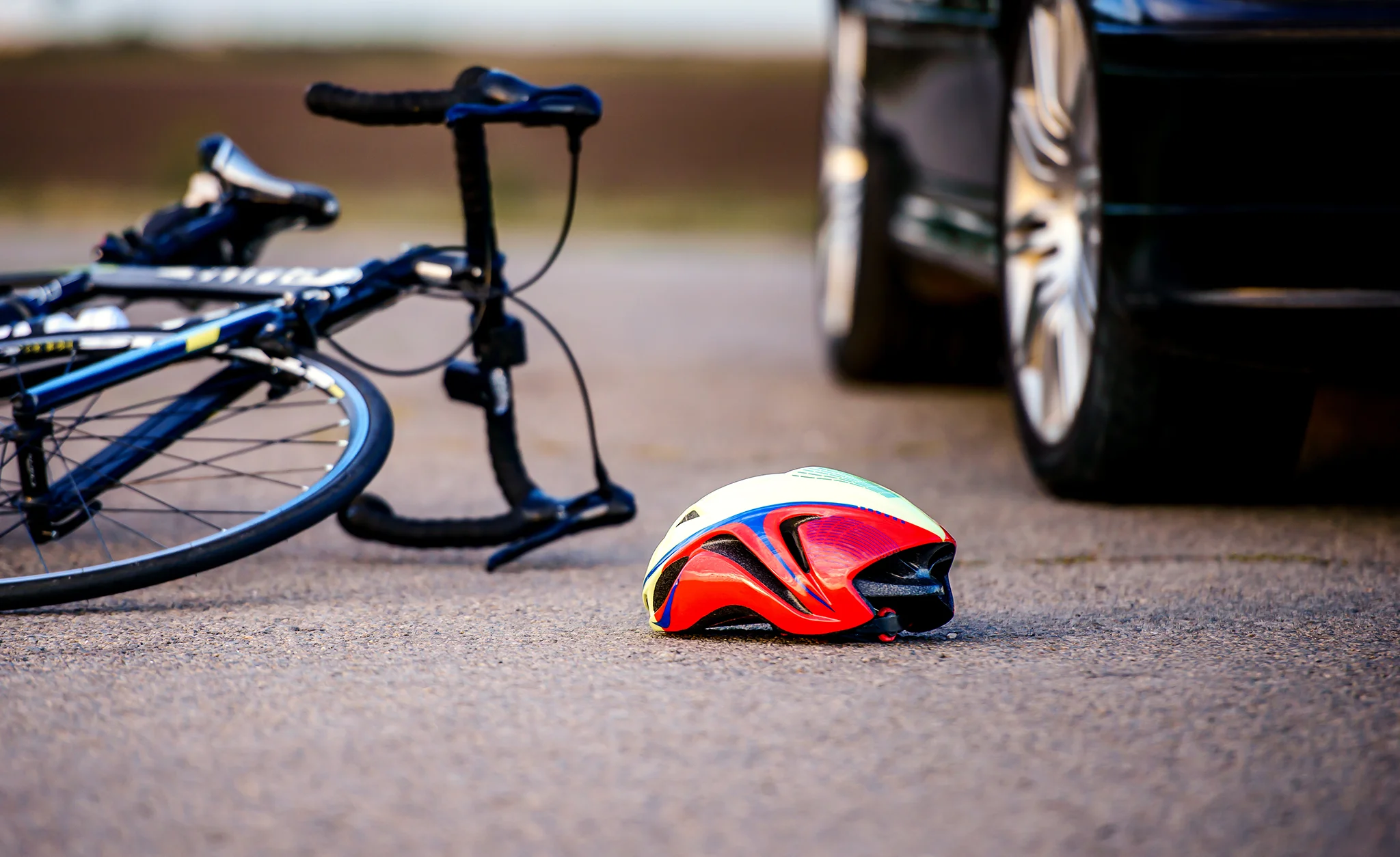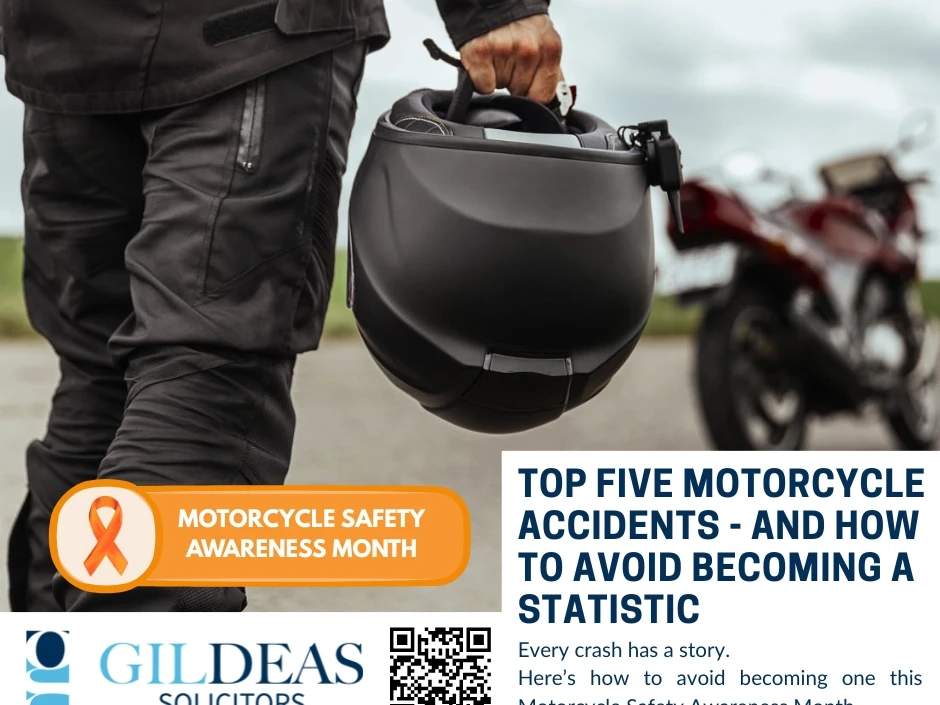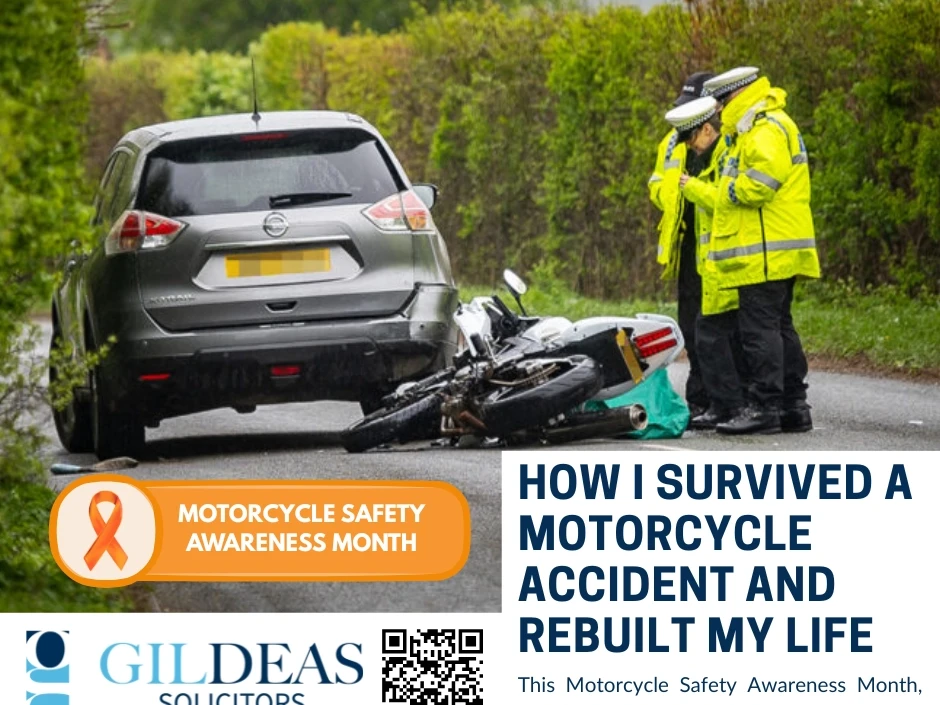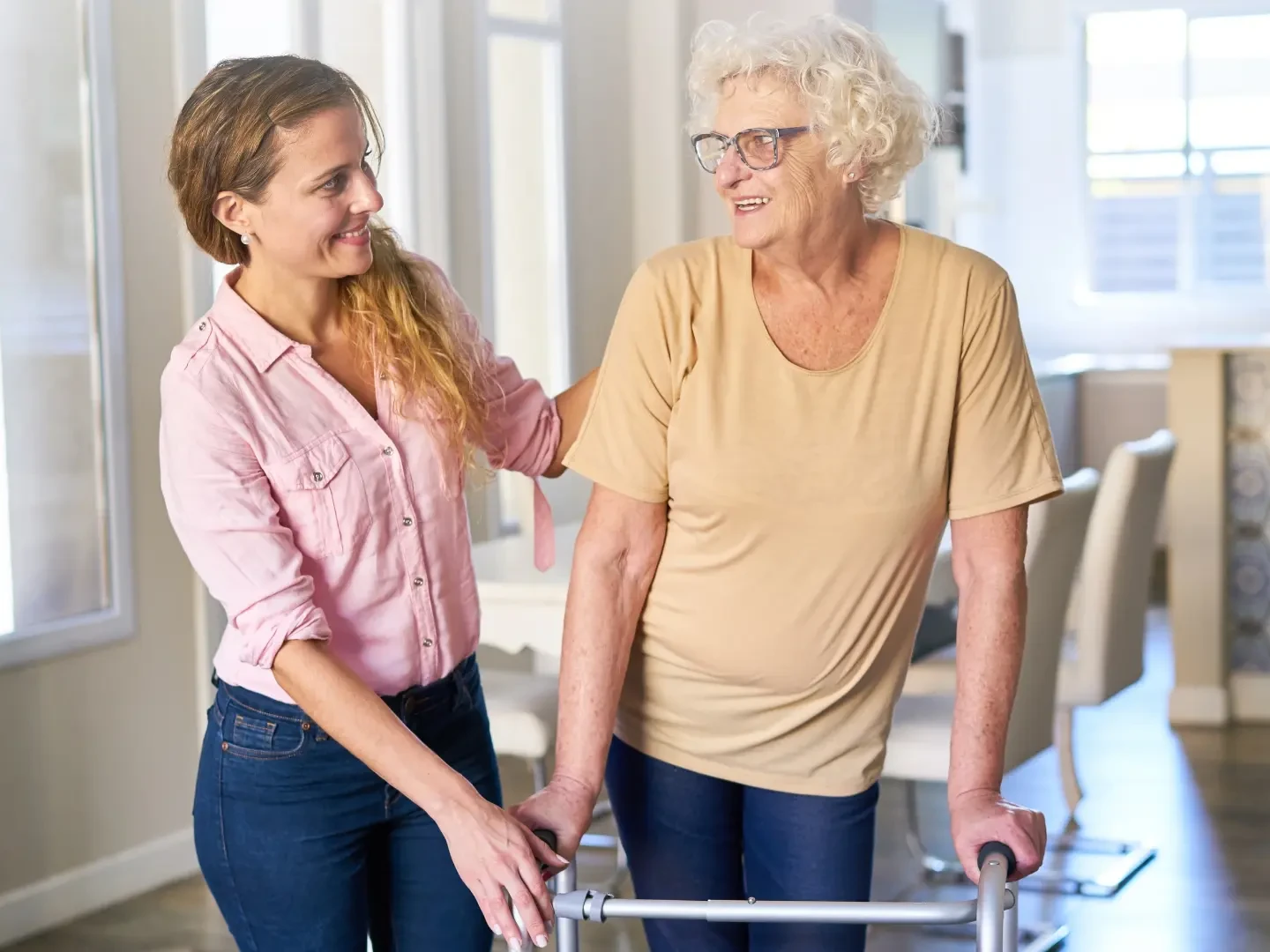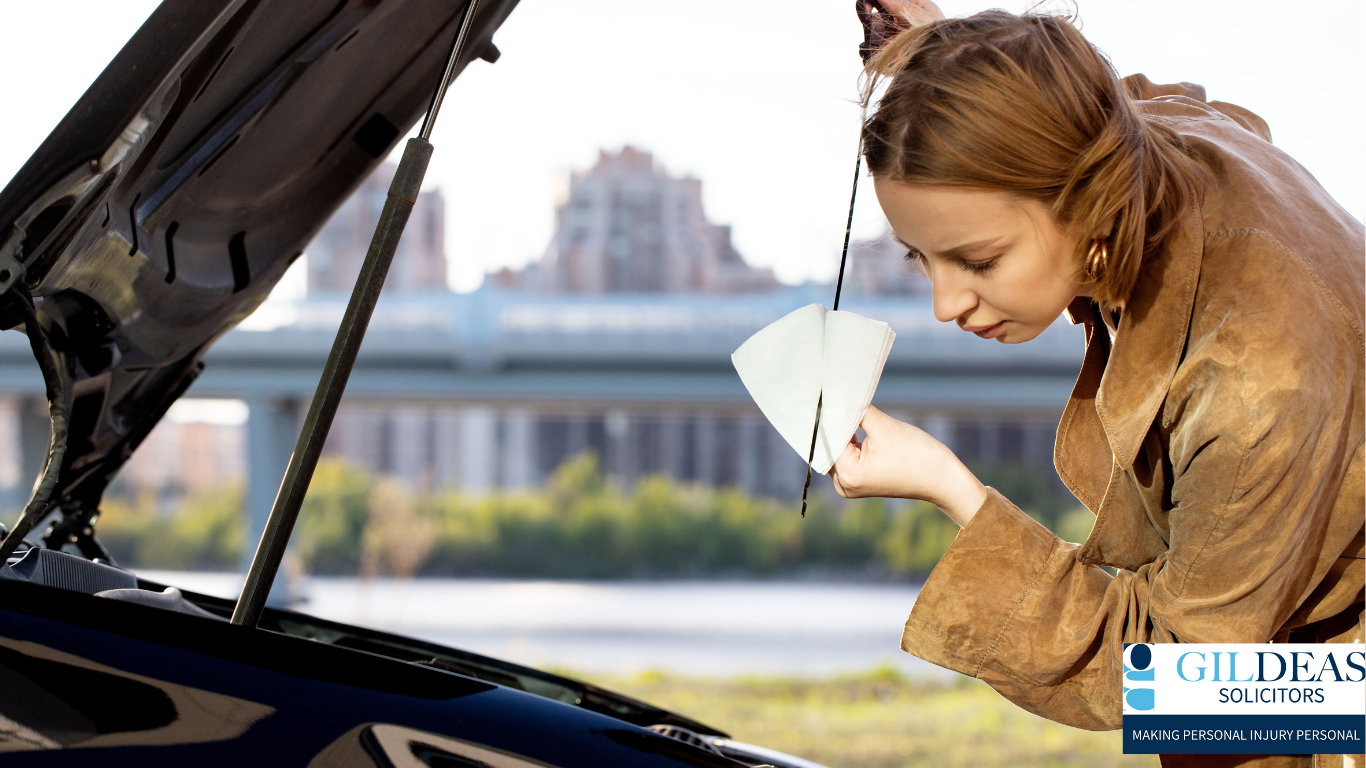Driving Home For Christmas – Our Tips For Safe Travels
If you’re planning a long journey this Christmas, use our helpful guide to help prepare for your travels, making sure your journey is safe – and giving you peace of mind during the festive season too!
Tips for driving home for Christmas
For a hassle-free journey, start with the following tips:
- Plan ahead to avoid delays – give yourself plenty of time for the trip to accommodate any potential delays
- Use a SatNav or maps app – apps such as Google Maps can help you plan the route and give you real-time traffic updates. Why not start a Christmas countdown with loved ones by sharing your location on the app?
- Bad weather? Drive safely – check out our top tips for driving safely in winter conditions
- Prepare for emergencies – so you’ve packed the presents, but what about if you get stuck? Pack a phone charger, ice scraper, a blanket, ump leads, snacks, and warm clothes in case you experience a breakdown or severe delays in the cold
Things to check before your journey
Christmas can be a stressful time for many of us, so it’s easy to forget the basics. Keep these tips in mind before you go to avoid any potential accidents.
Check your wipers and washers
Ensure your windscreen wipers are in good condition and that your washer bottle is full. It can be hard to see when driving in cold weather, so give yourself time by making sure you can clear your windscreen when dirt or moisture build up. Use pre-mixed screenwash rather than water to prevent your washer fluid from freezing, and to clear mud properly.
Check your oil
Checking your oil is always vital before a long journey but is good practice anyway to ensure your engine is in correct working order.
To check your oil level, make sure you’re parked on an even surface, then open up the bonnet. Check your vehicle’s manual for instructions specific to your car’s make and model, although usually the dipstick has a yellow handle. Pull it out, wipe it down with a clean rag, and reinsert all the way into its housing. Pull it out again and take the reading. Your dipstick should have two marks indicating the minimum and maximum oil levels.
If you’d rather see a professional, check into a mechanic for a quick oil check and change before you go.
Check your engine’s coolant level
Coolant regulates your engine, providing protection during the colder months. If your engine fluid freezes, it can be devastating for your vehicle as cracks can form in the engine. Make sure to check your coolant level to keep your engine running smoothly and avoiding any accidental damage further down the line.
Charge your phone
As well as storing all your questionable Christmas playlists, your phone is your lifeline if you break down or have an accident over Christmas. Keep your emergency numbers stored safely and keep a spare charging cable in the car so you can have plenty of battery in an emergency.
Check your emergency kit
Main roads and motorways can be packed over Christmas. If you’re faced with long delays, ensure you have an emergency kit with you – particularly if there’s bad weather forecast, which typically does happen in Scotland!
Re-fuel regularly
When the motorway gets busier over Christmas, the last thing you need is worrying about not making it to a petrol station – especially when it may not be open over the holidays. Don’t get caught out – make sure you have at least half a tank of fuel in your car so that you can get to your destination in time for Christmas.
Check your tyre pressure before you set off
No one wants to be stuck at the side of the road in the cold due to tyres with low pressure.
A quick check of your tyre pressure before you set off can give you peace of mind and prevent any unnecessary accidents on the way home for the holidays.
Keep yourself entertained!
It’s Christmas! Make sure you have plenty of snacks and games to keep yourselves entertained, and get those cheesy Christmas tunes on the go – maybe start with ‘Driving Home For Christmas’?
This Christmas, take some proactive steps to prepare for your journey. And if you do end up in an accident over the holiday – we’ve got you covered. From vehicle hire, repair, and supporting you through a personal injury claim, our legal elves are on hand to support you through the season.
Stay safe this Christmas!
Gildeas Solicitors is a recognised law firm specialising in personal injury claims, supporting you throughout Scotland from our offices in Glasgow and Edinburgh. We’re passionate about what we do, whilst putting our clients’ interests first. That’s why we make personal injury personal.
Considering our services? Call our dedicated New Claims team today on 0141 331 6070.
Can I Make a Claim If I Am Injured at the Christmas Party?
The festive season is a time for celebration, with Christmas parties and social gatherings taking centre stage. However, as enjoyable as these events can be, they also come with risks. Our personal injury solicitors are all too familiar with the number of accidents and injuries that tend to occur during the holidays, particularly at workplace Christmas parties.
While traditional office Christmas parties might be a thing of the past for many workplaces, modern celebrations often take place in restaurants, bars, or other social venues. As employees let their hair down and the drinks flow, accidents are more likely to happen. Whilst the typical embarrassments of overindulgence or awkward conversations may seem to be the worst consequences, serious accidents, injuries, and even fights can also occur. So, if you’re injured at a Christmas party, can you make a claim against your employer?
Can I Make a Claim if I Was Injured at the Christmas Party?
While the line between work-related activities and social events can sometimes blur during the Christmas season, it is still possible to make a personal injury claim against your employer for injuries sustained at a work Christmas party. The key factor in determining whether you have a claim is whether your employer has fulfilled their duty of care towards you, regardless of whether the event took place at the office or at a venue outside of work.
Employer’s Duty of Care at the Christmas Party
Employers have a legal obligation to provide a safe working environment for their employees, even outside of normal office hours. This duty of care extends to events such as the Christmas party, especially if the event is organised or funded by the employer. Even if the party takes place at a third-party venue, such as a bar or restaurant, the employer is still responsible for ensuring that the environment is safe and that employees are not exposed to unreasonable risks.
If you suffer an injury at a work Christmas party, the circumstances surrounding your injury will determine whether your employer can be held liable. Common accidents at Christmas parties include slips, trips, falls, and even injuries resulting from altercations or unsafe behaviour that could have been avoided by the employer.
Common Injuries at Christmas Parties
According to a study by National Accident Helpline, the following types of injuries are some of the most common at Christmas parties:
-
- Slips, trips, and falls – These are by far the most common accidents at Christmas parties. With increased foot traffic, decorations, wet floors, and alcohol consumption, the risk of slipping or tripping is significantly higher.
- Alcohol-related injuries – As the drinks flow, it’s not uncommon for partygoers to lose their balance or become involved in physical altercations, leading to injury.
- Injuries from accidents with equipment – If the venue provides entertainment, such as games or dancing, inadequate safety measures could result in injuries. For example, an improperly set-up dance floor or malfunctioning equipment could cause harm.
If you suffer any of these injuries or others at a Christmas party, it is important to assess whether your employer could be held responsible for your accident.
How to Make a Claim Against Your Employer
If you have been injured at a Christmas party, the first step is to seek medical attention for your injuries. Once you have taken care of your health, it’s time to consider whether you have a potential claim for compensation.
To make a personal injury claim against your employer, you will need to show that your employer either caused the accident through negligence or failed to take reasonable steps to prevent it. Some examples of employer negligence include:
-
- Failing to ensure the venue was safe for employees.
- Not providing adequate supervision or monitoring of the event.
- Not taking action to prevent excessive alcohol consumption or unsafe behaviour.
What Can You Claim For?
If your claim is successful, you might be entitled to compensation for:
-
- Medical costs – Including treatment, physiotherapy, and prescriptions related to your injury.
- Lost wages – If your injury caused you to miss work, you may be entitled to compensation for lost earnings.
- Pain and suffering – For the physical and emotional toll your injury has caused.
- Other expenses – Such as travel costs or necessary modifications to your home if your injury is severe.
Can I Make a No Win, No Fee Claim?
Yes, if you are considering making a claim against your employer after being injured at a Christmas party, Gildeas Solicitors offer No Win, No Fee personal injury claims. This means that if your case is not successful, you won’t have to pay any legal fees. We understand that pursuing a claim can feel daunting, but with a No Win, No Fee arrangement, you can focus on your recovery without worrying about the cost of legal representation.
In Conclusion
While a work Christmas party is meant to be a time for fun and celebration, accidents can happen. If you’re injured during a work-related event, you may be entitled to claim compensation against your employer. With Gildeas Solicitors, you can make a No Win, No Fee claim, ensuring that your legal costs are covered if your case is unsuccessful. Don’t let an injury at a Christmas party ruin your festive season – speak to our experts today to explore your legal options.
How We Can Help
If you’ve been injured at a Christmas party or another work-related event and are considering making a claim, our team of experienced personal injury solicitors is here to help. We can guide you through the process, advise you on the strength of your claim, and provide expert representation to ensure you receive the compensation you deserve.
We offer free, no-obligation consultations to assess your situation. Get in touch with us today to discuss your potential claim.
Gildeas Solicitors is a recognised law firm specialising in personal injury claims, supporting you throughout Scotland from our offices in Glasgow and Edinburgh. We’re passionate about what we do, whilst putting our clients’ interests first. That’s why we make personal injury personal.
Considering our services? Call our dedicated New Claims team today on 0141 331 6070.
The 12 Hazards of Christmas: Stay Safe This Holiday Season
The Christmas season brings joy for all of us, but it also increases the risk of accidents. From crowded shops to icy pavements, it’s easy to forget the hazards around us whilst we’re rushing to get everything done. At Gildeas Solicitors, we want to help ensure your festive season remains accident-free. Below are 12 common hazards to be aware of while out and about this Christmas, along with practical tips for staying safe.
1. Slips and Falls in Shopping Centres
With Christmas shopping in full swing, the busy shopping centres and high streets can be a nightmare. Spills, wet floors, and crowded spaces increase the chances of slipping or falling.
Safety Tip: Always keep an eye out for wet floors and spills and report them to staff if necessary. Wear shoes with a good grip, especially if you're walking on wet or slushy pavements, and be cautious of crowded aisles.
2. Accidents in Car Parks
Car parks are often chaotic during the Christmas period, with packed spaces and drivers rushing to find a spot. In the scramble to park, accidents like minor collisions, door dings, and even pedestrian injuries can happen.
Safety Tip: Always park in well-lit areas and take extra care when reversing or walking through crowded car parks. Be aware of your surroundings and avoid rushing to your car when it’s busy.
3. Injuries from Shopping Trolleys
Busy supermarkets are full of hazards during Christmas shopping, especially when it comes to pushing trolleys through crowded aisles. Collisions with other shoppers or dodgy trolleys can lead to injuries.
Safety Tip: If you’re using a shopping trolley, be mindful of your speed and direction, especially in tight spaces. If you spot a malfunctioning trolley, let staff know.
4. Pedestrian Accidents in Crowded Streets
With so many people out shopping, pedestrian accidents are more likely to occur in busy areas. Whether bumping into another shopper, or a more serious accident with a vehicle, high foot traffic increases the risks.
Safety Tip: Stay alert when walking, particularly at pedestrian crossings. Watch out for vehicles entering pedestrian areas and avoid distractions like looking at your phone while crossing the road.
5. Car Accidents in Christmas Traffic
Christmas traffic is notorious for being stressful and dangerous, with congested roads and impatient drivers. The combination of increased traffic and bad weather can result in more accidents.
Safety Tip: Plan your journeys in advance to avoid peak traffic times, and always check traffic updates before leaving. Stay calm in heavy traffic, maintain a safe distance from other vehicles, and be extra cautious in icy or wet conditions.
6. Icy Roads and Pavements
Slippery, icy roads and pavements are a major winter hazard. Whether you're walking to the shops or driving, icy conditions significantly increase the risk of accidents during the festive season.
Safety Tip: If you’re walking, wear shoes with good grip and avoid icy surfaces where possible. For drivers, make sure your car is equipped with winter tyres and check the weather forecast before heading out.
7. Accidents at Public Transport Stations
With many people travelling during the holidays, public transport stations and terminals can be crowded and chaotic. Injuries from rushing, falling on escalators, or accidents on trains or buses are more likely at this time of year.
Safety Tip: Be cautious when using public transport. Stand clear of the edges of train platforms, be mindful of slippery floors, and always hold onto handrails when using escalators or stairs.
8. Dangers of Drunk Driving After Parties
Christmas parties and festive events often involve alcohol, and some people may be tempted to drive home after drinking. Drunk driving leads to a significant rise in road traffic accidents during the holiday season.
Safety Tip: If you're attending a party, plan your transport in advance. Take a taxi, arrange for a designated driver, or use public transport. Never drive if you’ve been drinking and remember that alcohol can stay in your system longer than you think.
9. Injuries from Overcrowded Events
From Christmas markets to special festive events, overcrowding is a common problem. Overcrowded spaces can result in pushing, shoving, and even accidents, particularly in cramped venues.
Safety Tip: If you're attending an event, try to arrive early to avoid the rush. Stay aware and be mindful of your personal space to avoid being knocked or shoved.
10. Traffic Accidents While Traveling Long Distances
Long-distance driving during Christmas can be particularly hazardous, especially if you're driving through unfamiliar or snowy areas. Exhaustion, distractions, and bad weather increase the chances of accidents.
Safety Tip: Plan your route and take regular breaks to avoid fatigue. If you’re driving in bad weather, reduce your speed and keep a safe distance. Carry emergency supplies in case you get stranded in the snow.
11. Snow and Ice on Paths and Driveways
If snow or ice hits your area, it’s important to keep paths and driveways clear to prevent accidents. Slips from icy surfaces can be painful and lead to serious injury, particularly for elderly or vulnerable individuals.
Safety Tip: Salt or grit walkways and driveways to prevent ice from forming. If possible, shovel snow as soon as it falls to reduce the risk of slipping. Be cautious when walking on untreated surfaces, and wear shoes with good traction.
12. Pedestrian Accidents in Car Parks After Dark
During the festive season, shopping centres tend to stay open later, which means you'll often be walking through car parks in the dark. Poor visibility increases the risk of pedestrian accidents, as drivers may have difficulty spotting you.
Safety Tip: Wear reflective clothing if you're walking in dark areas, especially in dark car parks. Always make yourself visible to drivers and stay alert for moving vehicles.
Conclusion
While Christmas is a time for celebration, it’s important to be aware of the increased risks associated with being out and about during the holiday season. From crowded shopping centres to icy roads, being cautious can help you avoid accidents and injuries.
If you or someone you know experiences an injury while out shopping, travelling, or celebrating this Christmas, Gildeas Solicitors is here to help. Our expert team can assist with personal injury claims, offering the support and compensation you deserve.
Stay safe and enjoy the festivities!
Gildeas Solicitors is a recognised law firm specialising in personal injury claims, supporting you throughout Scotland from our offices in Glasgow and Edinburgh. We’re passionate about what we do, whilst putting our clients’ interests first. That’s why we make personal injury personal.
Considering our services? Call our dedicated New Claims team today on 0141 331 6070.
Biker seriously injured by uninsured driver
BIKER SERIOUSLY INJURED BY UNINSURED DRIVER IN HIT AND RUN AWARDED SIX FIGURE SETTLEMENT
Gildeas Solicitors secured a six-figure settlement for a client who was seriously injured in a hit-and-run accident with an uninsured driver.
Read on to learn how Gildeas Director, Emma Thomson and Solicitor Advocate, Fergus Thomson successfully represented our client in this challenging case.
Overview of the case
Back in 2021, our 61-year-old client was travelling to work on his motorcycle. Whilst riding down a main road, he was struck by an uninsured driver travelling in the opposite direction at 70mph in a hit and run accident.
“I was just going to work that morning. If I’d gotten a taxi that day, it would’ve been a whole different story.”
There were several difficulties in the case due to the unknown identity of the third-party driver. Gildeas Solicitors acted quickly to ensure the third-party driver was identified before the time-bound limitations of the case were reached. The driver was eventually found and prosecuted, with our client awarded six figures in damages.
Injuries sustained by the client
Police and paramedics attended the scene. Our client was taken by ambulance to hospital where he was diagnosed with two broken bones, a fractured pelvis, and a right heel laceration requiring several stitches. His injuries meant surgery was needed in order to put metal implants in place. Our client underwent an extensive healing process, including weeks of physiotherapy and hydrotherapy.
His mobility and quality of life were severely affected, as he had to keep his leg elevated for 6 weeks following surgery. This meant he was in a wheelchair, followed by the use of crutches. The circumstances of the accident led to him requiring cognitive behavioural therapy, with round-the-clock care provided by his wife and daughter, which significantly affected family life.
Prior to the accident, our client was a keen tennis player and had a leadership role in the manufacturing industry, where he was employed for 14 years.
The outcome of the case
Gildeas provided bespoke support to our client following the accident. When he returned to work on a part-time basis, Gildeas assisted with his limited mobility by pressing to have a taxi service, taking pressure from his wife. Gildeas also made arrangements for medical examinations and cognitive behavioural therapy whilst the case was ongoing. Nonetheless, our client’s health was severely affected, and he did not return to full-time work in his previous position.
The unique challenge in this case was in identifying the third-party driver. After a lengthy process and negotiations involving Police Scotland and the Procurator Fiscal, a court action was raised. The driver was eventually prosecuted on two charges of dangerous driving and causing life-changing injuries. They were sentenced to three years in prison and banned from driving.
Our client said of the case,
“I didn’t realise how bad the damage was at the time. The support from Emma and Fergus at Gildeas, the consultants, and the hospital were amazing. It was really tough in the first year, but it was the support and the infrastructure behind us that kept us going.
Everything from the day we started was so professional. They were very good at explaining how the whole process worked in the very beginning. They put everything together and kept us up to date all the way through. Gildeas worked really hard to get where we were.”
The final damages awarded gave fair compensation for our client’s injuries, treatment, loss of earnings, and resulting quality of life.
Fergus Thomson, Solicitor Advocate added,
“We were pleased to secure a just settlement for our client and help him through a very difficult time.”
Gildeas Solicitors is a recognised law firm specialising in personal injury claims, supporting you throughout Scotland from our offices in Glasgow and Edinburgh. We’re passionate about what we do, whilst putting our clients’ interests first. That’s why we make personal injury personal.
Considering our services? Call our dedicated New Claims team today on 0141 331 6070.
Road Safety Week 2024: Your Cycling Safety Guide
As we observe Road Safety Week 2024, it is crucial to focus on the safety of cyclists, who are among the most vulnerable road users. At Gildeas Solicitors, we emphasise that understanding and applying safety measures can significantly reduce the risk of accidents and enhance the cycling experience. This blog aims to provide essential tips for cyclists, highlighting the importance of road safety and awareness while riding.
The Importance of Cycling Safety
Cycling is an excellent way to stay fit, reduce your carbon footprint, and enjoy the outdoors. However, it also carries inherent risks. According to government statistics, collisions with motor vehicles pose a significant threat to cyclists, often resulting in serious injuries or fatalities. Understanding the current laws and safety measures can help cyclists protect themselves while navigating the roads.
Key Risks for Cyclists
Motor Vehicle Collisions: The most significant risk cyclists face is being involved in a collision with a motor vehicle. Many accidents occur due to drivers failing to look for cyclists. To mitigate this risk, always follow the Highway Code, signal your intentions clearly, and maintain a safe distance from vehicles.
Dooring: This occurs when a car door opens unexpectedly into a cyclist's path. To avoid this, keep a safe distance from parked cars and slow down as you approach them.
Poor Road Conditions: Potholes, debris, and slippery surfaces can pose serious hazards. Always keep an eye on the road ahead and be prepared to adjust your speed and direction accordingly.
Right Turns Across Traffic: This manoeuvre can be particularly dangerous. Always signal your intentions well in advance, and if in doubt, dismount and use pedestrian crossings.
Heavy Goods Vehicles (HGVs) and Buses: These large vehicles have significant blind spots. Stay out of their path and avoid stopping on the inside of them at junctions.
Distracted or Aggressive Drivers: Not all drivers will be attentive or courteous. Always remain vigilant and be prepared to react to unexpected actions from other road users.
Essential Cycling Safety Tips
To ensure a safer cycling experience, consider these practical tips:
Wear Protective Gear: Always wear a well-fitted helmet and consider additional protective gear, such as knee and elbow pads, to minimise injury in case of a fall.
Use High-Visibility Clothing: Wear bright or reflective clothing, especially in low-light conditions, and use lights on your bike to enhance visibility.
Stay Alert and Focused: Be aware of your surroundings, anticipate potential hazards, and avoid distractions such as mobile devices.
Signal Your Intentions: Use hand signals to indicate turns and stops, giving other road users ample notice of your movements.
Ride Predictably: Maintain a straight line and avoid sudden manoeuvres to help drivers anticipate your actions.
Follow the Highway Code: Adhere to all traffic rules, including speed limits and road signs. Understanding your rights and responsibilities as a cyclist is crucial.
What to Do If You're Involved in an Accident
If you find yourself in a cycling accident that was not your fault, it’s essential to seek legal advice. At Gildeas Solicitors, we can help you navigate the process of claiming compensation for:
- Medical expenses
- Loss of earnings
- Bicycle repairs or replacements
- Psychological trauma
Conclusion
During Road Safety Week 2024, we urge all cyclists to prioritise safety by following these tips and remaining vigilant on the roads. By taking proactive measures and being aware of your surroundings, we can all contribute to making our roads safer for everyone.
For more information on Road Safety Week 2024, please visit: https://www.brake.org.uk/road-safety-week
Gildeas Solicitors is a recognised law firm specialising in personal injury claims, supporting you throughout Scotland from our offices in Glasgow and Edinburgh. We’re passionate about what we do, whilst putting our clients’ interests first. That’s why we make personal injury personal.
Considering our services? Call our dedicated team today on 0141 331 6070.
Road Safety Week 2024: Do You Know The Highway Code?
- Home
- Archive by Category "Blog" (
- Page 3 )
Share this article
Understanding the Updates for Road Safety
Today’s blog for our Road Safety Week 2024 campaign focuses on understanding the Highway Code updates. It’s vital for all road users to familiarise themselves with these changes. Introduced in January 2022, the updates aim to protect vulnerable road users, including pedestrians, cyclists, horse riders, and motorcyclists. At Gildeas Solicitors, we believe that understanding these changes is crucial for enhancing road safety and preventing accidents.
The Hierarchy of Road Users
At the heart of the recent updates is the new “hierarchy of road users.” This concept emphasises that those who operate vehicles capable of causing the most harm bear the greatest responsibility to ensure the safety of others. Rule H1 of the Highway Code states: “Those in charge of vehicles that can cause the greatest harm in the event of a collision bear the greatest responsibility to take care and reduce the danger they pose to others.”
This hierarchy underscores the responsibility of drivers of cars, vans, coaches, buses, and HGVs to reduce risks for more vulnerable road users.
Key Changes to the Highway Code
Despite the importance of these updates, many drivers remain unaware of the changes, which is concerning given the latest road casualty statistics. In 2023, vulnerable road users accounted for over 38% of road casualties in Great Britain, with a quarter of fatalities being pedestrians.
Some key updates to the Highway Code include:
-
-
- Right of Way at Junctions: Drivers must give way to pedestrians waiting to cross and should not cut across cyclists or horse riders at junctions.
-
- Shared Spaces: Cyclists should avoid passing pedestrians or horse riders closely or at high speeds, ensuring they announce their presence safely.
-
- Cyclist Positioning: Cyclists are encouraged to ride in the centre of the lane on quiet roads and keep a safe distance from the kerb on busier roads.
-
- Safe Overtaking Distances: When overtaking cyclists, drivers should allow at least 1.5 metres (5 feet) of space at speeds up to 30mph, increasing this distance at higher speeds.
- Dutch Reach Technique: Drivers should use the “Dutch Reach” method when opening vehicle doors to avoid collisions with cyclists or pedestrians.
-
The Impact of Increased Awareness
Education and awareness are key to the successful implementation of these changes. A recent survey by the RAC indicated that only 18% of drivers believe the updates have made roads safer for pedestrians, highlighting the need for better communication about these important changes.
Younger drivers (aged 17 to 24) tend to view the changes more positively compared to older drivers. This generational gap underscores the necessity for widespread education campaigns that target all demographics to enhance road safety awareness.
The Role of Government and Road Safety Organisations
In response to these challenges, the Government relaunched its THINK! campaign, which encourages road users to consider the safety of others. However, many road safety organisations, including RoSPA, advocate for more comprehensive educational initiatives to ensure that the new hierarchy of road users is widely understood.
Conclusion
This Road Safety Week, we encourage everyone to familiarise themselves with the updated Highway Code. Understanding these rules not only helps protect vulnerable road users but also contributes to safer roads for all.
For further information on the changes to the Highway Code and how they impact your safety, visit the official Highway Code website.
At Gildeas Solicitors, we are committed to supporting you in the event of a road traffic accident. If you have been involved in an incident that was not your fault, contact our dedicated New Claims team at 0141 331 6070 for expert legal advice.
Your safety is our priority, and together, we can work towards safer roads for everyone.
For more information on Road Safety Week 2024, please visit: https://www.brake.org.uk/road-safety-week
Gildeas Solicitors is a recognised law firm specialising in personal injury claims, supporting you throughout Scotland from our offices in Glasgow and Edinburgh. We’re passionate about what we do, whilst putting our clients’ interests first. That’s why we make personal injury personal.
Considering our services? Call our dedicated New Claims team today on 0141 331 6070.
More to explore
Road Safety Week 2024: Motorbike Safety Tips
At Gildeas Solicitors, we recognise the unique challenges faced by motorcycle riders, who are among the most vulnerable road users. For Road Safety Week 2024, we're highlighting how crucial it is for motorcyclists to prioritise safety on the roads. This blog provides essential motorbike safety tips to enhance your riding safety and awareness, helping to prevent accidents and protect lives.
The Importance of Motorcycle Safety
Motorcycle accidents can be frightening and, in severe cases, life changing. Despite advancements in vehicle safety and regulations, motorcyclists remain at a higher risk of injury or fatality on the roads. Recent statistics show that motorcyclists are involved in approximately 1 in 10 road traffic fatalities, highlighting the need for heightened awareness and careful riding practices.
Essential Safety Tips for Motorcyclists
To help ensure your safety, here are some vital motorcycle safety tips:
- Wear Protective Gear: Always wear a well-fitted helmet and protective clothing, including gloves and boots. High-visibility jackets can significantly increase your visibility to other road users.
- Check Your Bike: Before every ride, conduct a thorough safety check of your motorcycle. Ensure that brakes, lights, indicators, and tyres are in good condition.
- Stay Alert: Be aware of your surroundings. Anticipate potential hazards, including vehicles changing lanes, pedestrians, and road conditions. Avoid distractions, such as mobile phones or loud music.
- Ride Defensively: Always assume that other drivers may not see you. Maintain a safe distance from vehicles, especially in traffic, and be prepared to react to sudden stops or changes in direction.
- Adjust to Weather Conditions: Wet or icy roads can significantly affect your control of the motorcycle. Slow down and allow extra time for your journey during adverse weather.
- Avoid Riding in Blind Spots: Stay out of the blind spots of larger vehicles, especially lorries and buses. If you can’t see the driver in their mirrors, they likely can’t see you.
- Follow Traffic Rules: Adhere to all traffic regulations, including speed limits and lane usage. Use indicators to signal your intentions to other road users.
- Take a Riding Course: Consider enrolling in an advanced riding course to enhance your skills and knowledge. These courses can provide valuable techniques for safe riding and accident avoidance.
Recognising External Risks
Motorcyclists face specific external risks that can lead to accidents, including:
- Poor Road Conditions: Potholes, gravel, and debris can pose significant hazards for motorcyclists. Always scan the road ahead for potential dangers.
- Adverse Weather: Rain, snow, and fog can drastically reduce visibility and traction. Adjust your riding style to account for changing conditions.
- Inattentive Drivers: Many motorcycle accidents occur due to the negligence of other road users. Stay vigilant and prepared for unexpected actions from drivers.
What to Do in the Event of an Accident
If you find yourself involved in a motorcycle accident that was not your fault, it’s essential to seek legal advice. At Gildeas Solicitors, we are committed to helping you understand your rights and potential compensation claims. You may be entitled to compensation for:
- Medical expenses
- Loss of earnings
- Repair or replacement of your motorcycle
- Psychological trauma
Conclusion
This Road Safety Week, we encourage all motorcyclists to prioritise safety by following these tips and remaining vigilant on the roads. By taking proactive measures, we can all contribute to making our roads safer for everyone.
For more information on Road Safety Week 2024, please visit: Brake - Road Safety Week.
Gildeas Solicitors is a recognised law firm specialising in personal injury claims, supporting you throughout Scotland from our offices in Glasgow and Edinburgh. We’re passionate about what we do, whilst putting our clients’ interests first. That’s why we make personal injury personal.
Considering our services? Call our dedicated New Claims team today on 0141 331 6070.
Road Safety Week: Getting Your Vehicle Ready For Winter
- Home
- Archive by Category "Blog" (
- Page 3 )
As Road Safety Week approaches, it’s essential to prioritise vehicle safety, particularly as winter weather sets in.
At Gildeas Solicitors, we understand the impact that road accidents can have on individuals and families. As personal injury lawyers, we are committed to raising awareness about safe driving practices and the importance of preparing for winter conditions to help prevent accidents and protect lives on the road.
Why Vehicle Preparation Matters
Poor weather conditions significantly increase the risk of winter car accidents. It’s estimated that 21% of all crashes in the UK between December and March are linked to adverse weather. Factors such as rushing during the school run, neglecting vehicle maintenance, and inadequate preparation can lead to serious consequences. This blog will guide you on how to keep yourself and others safe during the winter months.
Essential Vehicle Maintenance Tips During Road Safety Week
-
- Clear Snow and Ice: Always remove snow and ice from your vehicle before driving. While it’s not illegal to drive with snow on your roof, it poses a danger as it can slide down and obstruct your view.
- Check Tyre Tread and Pressure: Ensure your tyre tread depth exceeds the legal minimum of 1.6mm. In winter, increase your tyre pressure by 0.2 bar to enhance safety.
- Inspect Lights: Functional lights are vital for visibility. Walk around your vehicle to check that all lights are operational and clear of snow or mud.
- Examine Wiper Blades: Wipers typically last around six months. Ensure they’re in good condition for optimal performance in winter precipitation.
- Change Your Oil: Cold weather thickens engine oil, reducing its effectiveness. Regularly check and replace it as necessary.
- Prepare an Emergency Kit: Accidents happen. Keep essentials like a blanket, high-visibility vest, torch, ice scraper, de-icer, first aid kit, and snacks in your car.
Driving Tips for Winter Conditions
Driving during winter can be challenging, even for seasoned drivers. Here are some essential tips:
-
- Plan Your Journey: Check maps and local weather forecasts. Avoid areas prone to flooding or steep inclines.
- Allow Extra Time: Give yourself more time to reach your destination to avoid rushing. Drive slowly, especially around corners, and accelerate gently.
- Maintain Safe Distances: Braking takes longer on icy roads. Keep a distance of at least 10 times the normal distance between your car and the one ahead.
Recognising External Risks
Winter presents unique challenges that can lead to road traffic collisions, such as:
-
- Black Ice
- Reduced Visibility: Heavy rain, snow, or fog can drastically affect your ability to see and be seen.
- Windy Conditions
- Flooding
To mitigate these risks, follow these additional safety steps:
-
- Ensure your windscreen and rear window are fully clear before driving.
- Invest in a quality de-icer and ice scraper.
- Maintain your wipers and lights in excellent condition.
- Use fog lights wisely and remember to switch them off when not needed.
- Consider using winter tyres for enhanced traction.
Conclusion
This Road Safety Week, taking proactive steps to prepare your vehicle for winter conditions is essential. By prioritising vehicle maintenance and following safe driving practices, we can all contribute to making our roads safer this winter.
For more information on Road Safety Week, please visit: https://www.brake.org.uk/road-safety-week
Still have questions?
You might be interested in our road safety guides:
National Dash Cam Day – Why You Shouldn’t Drive Without One
Motorcycle Safety Isn’t Optional, It’s Essential
Gildeas Solicitors is a recognised law firm specialising in personal injury claims, supporting you throughout Scotland from our offices in Glasgow and Edinburgh. We’re passionate about what we do, whilst putting our clients’ interests first. That’s why we make personal injury personal.
Considering our services? Call our dedicated New Claims team today on 0141 331 6070.
Bonfire Night: Stay Safe With Our Top Tips
Bonfire Night is always a fun and memorable night, whether you’re gathering with loved ones for fireworks, or attending a larger display. But no one wants to ‘Remember, Remember the fifth of November’ as the night of their accident.
Read on for our ten essential tips to help you enjoy Bonfire Night safely.
1. Don’t Go Near A Firework After It Has Been Lit
Never go back to a lit firework – you never know if it could go off. And if you’re heading out to watch fireworks, select a safe viewing area. This will help prevent injuries from stray rockets or falling debris.
2. Attend Organised Events
Whenever possible, opt for organised fireworks displays. These events are usually run by professionals who follow safety regulations, significantly reducing the risk of accidents.
3. Keep a Safe Distance
If you’re lighting fireworks at home, maintain a safe distance. The recommended distance is at least 25 metres from spectators and flammable materials. Make sure your launch area is clear and away from buildings, vehicles, and overhead obstructions.
4. Wear Appropriate Clothing
Dress appropriately for the evening. Wear warm, non-flammable clothing, and avoid loose items that could catch fire. Closed-toe shoes are a must to protect your feet, especially if you’re walking on uneven ground or near bonfires.
5. Supervise Children and Pets
Children and pets can be unpredictable, especially around loud noises and bright lights. Keep a close eye on children, ensuring they understand the dangers of fireworks. For pets, consider keeping them indoors to reduce their anxiety and keep them safe.
6. Follow Firework Instructions
If you’re using fireworks, always read and follow instructions carefully. Only use fireworks that are legal and conform to safety standards. Avoid attempting to relight duds or modify any fireworks.
7. Have a Water Source Handy
Always have a bucket of water or a hose nearby when setting off fireworks. This can help extinguish any small fires that may arise and can also be used to soak used fireworks before disposal.
8. Dispose of Fireworks Responsibly
After the celebrations, ensure that all used fireworks are disposed of properly. Soak them in water and place them in a metal bin. This prevents any risk of reignition and keeps your surroundings safe.
9. Drive Safely
Bonfire Night can lead to increased traffic and pedestrians on the roads. If you’re driving, remain vigilant and cautious. Watch for people crossing the road and be mindful of any potential distractions, such as fireworks.
10. Know Emergency Contacts
Lastly, familiarise yourself with local emergency contacts. Keep your phone charged and have emergency numbers handy in case of an incident. Knowing who to call can make a significant difference in urgent situations.
By following these tips, you can help ensure that your Bonfire Night remains a celebration of fun and community rather than an occasion for accidents or injuries.
Stay safe, enjoy the festivities, and remember that safety should always come first. If you do find yourself in an unfortunate situation, don’t hesitate to seek legal advice. Gildeas Solicitors can offer tailored support in the event of non-fault public liability claims. Get in touch at our contact form or email [email protected].
Enjoy your Bonfire Night!
For more information on firework safety, visit Fire Safety Scotland.
Gildeas Solicitors is a recognised law firm specialising in personal injury claims, supporting you throughout Scotland from our offices in Glasgow and Edinburgh. We’re passionate about what we do, whilst putting our clients’ interests first. That’s why we make personal injury personal.
Considering our services? Call our dedicated New Claims team today on 0141 331 6070.
Exciting Developments at Gildeas: Five Changes To Our Business
At Gildeas Solicitors, we believe that continuous improvement is key to providing our clients with the highest standard of service. In line with this commitment, we are pleased to discuss a series of significant changes we’ve taken at our firm, aimed at modernising our operations and enhancing your experience with us.
Introduction of a change management framework to review performance
At the beginning of our change management project, we decided upon several goals; to improve the customer experience, reduce lifecycles, improve our claims practices and increase efficiencies. To do this, we set about updating our best practice guidance and modernising our claims management system to meet the requirements of the business.
To further improve our operations, we’ve introduced a robust change management framework. This will allow us to systematically review our performance and implement improvements where necessary. By fostering a culture of reflection and adaptability, we aim to ensure that our processes remain effective and aligned with our strategic goals.
Implementation of multiple systems driven innovations to streamline our approach to claims
Using access to increased levels of data, we were able to identify areas of the business that were working well and implement those practices across other departments.
We developed bespoke system solutions which integrate and improve all Management Information (MI) and Key Performance Indicators (KPIs) optimising our claims process to align with our strategic objectives.
We were also able to pinpoint areas of the business that required modernisation and set about implementing improvements which have had a positive effect on the customer experience and journey. By aligning our procedures with our overarching goals, we can deliver a more consistent and transparent experience.
Modernisation of our claims management procedures to align with our goals
We introduced improvements to our claims management system which have had a positive impact across accounting, claims, and management processes.
Our focus on improving our claim management system and reporting has allowed us to leverage data-driven insights, ensuring that we remain responsive to our client’s needs.
Complete overhaul of office and home-based IT hardware systems
We’ve undertaken a comprehensive upgrade of our office and home-based IT hardware systems, including new laptops, phone systems, and software. These adaptations have included a whole-system migration, and significant changes to our infrastructure. We continue to develop our client-facing operations, with development underway on our websites, branding, and social media.
This overhaul not only ensures that our team has access to the latest technology but also enhances our ability to manage claims efficiently and securely. By investing in state-of-the-art IT infrastructure, we’re better equipped to respond to our client’s needs and adapt to the fast-paced legal landscape.
Ongoing review of our best practice to improve the customer journey
Finally, we are committed to the ongoing review of our best practices to continuously improve the client journey. We understand that the legal process can be daunting, and we aim to make it as seamless as possible. By regularly assessing and refining our practices, we ensure that every interaction with our firm is positive and productive.
Our Director, Lindsay Hare and Senior Claims Manager, Danny Thomson have been leading on the project. Of the developments, Danny said:
“The project has been running for 18 months. We are delighted with the improvements that we have implemented so far, and we are excited about the next stages of the development which we are confident will continue to help the business improve.”
Conclusion
These changes mark a significant step forward for Gildeas, reflecting our unwavering commitment to enhancing service delivery and meeting the evolving needs of our clients. As we continue to implement these innovations, we are confident that they will lead to a more efficient, transparent, and satisfying experience for everyone who engages with our firm.
We invite you to stay connected with us as we navigate this exciting journey. Whether you’re a current client or considering our services, we welcome your feedback and are eager to assist you with your legal needs. Explore our website for more information on how these advancements can benefit you, and don’t hesitate to reach out to us with any questions or to discuss how we can support you.
Gildeas Solicitors is a recognised law firm specialising in personal injury claims, supporting you throughout Scotland from our offices in Glasgow and Edinburgh. We’re passionate about what we do, whilst putting our clients’ interests first. That’s why we make personal injury personal.

